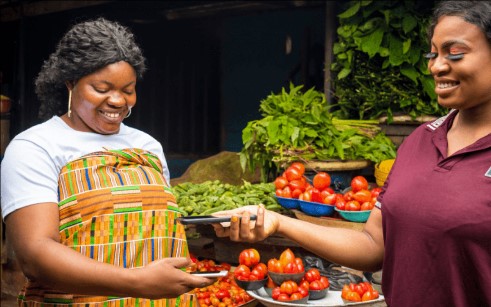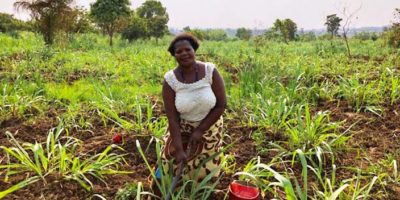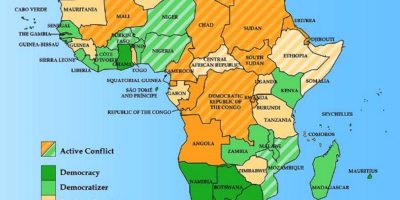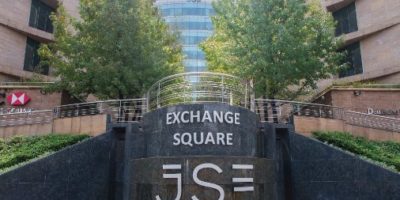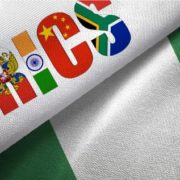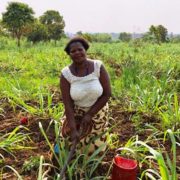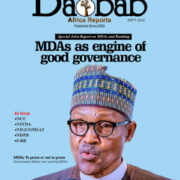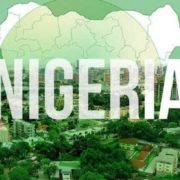The European Investment Bank (EIB) has completed its annual survey of banks in Africa in 2022, supported by Making Finance Work for Africa. In Finance in Africa in 2022: Navigating the financial landscape in turbulent times, the seventh report in this series, we surveyed 70 banks in sub-Saharan Africa between April and June 2022 to understand how the war in Ukraine is impacting banks and to learn their views on climate lending, gender lending and the accelerating digitisation of the sector.
Banks weathered the pandemic well, showing the resilience of the sector. However, the war in Ukraine is leading to new concerns. With central banks in many countries raising domestic interest rates and bond funding becoming more expensive due to tighter global financial conditions, there has been a significant increase in banks worried about funding costs. This hardly featured in the survey last year, when banks were mainly concerned about the impact of the pandemic on asset quality.
“The slowdown of the global economy and the tightening of financing condition amplify the economic problems facing Africa. As public sector debt servicing costs are increasing, there is a risk of crowding out for the private sector. Investment needs remain however significant and countries in sub-Saharan Africa will need to keep focus on limiting the effects on private lending,” said EIB Chief Economist Debora Revoltella.
Adding: “It will be crucial to maintain access to finance for companies during a global downturn. The region has a strong partner with the European Investment Bank. We have been investing in Africa since 1965 and in 2021 alone, the EIB signed agreements for investments benefiting operations worth €2 billion in sub-Saharan Africa under a dedicated ACP Investment Facility”.
Banks cautiously optimistic
Asset quality remains a concern this year for many banks, especially for loans to small and medium enterprises. Headline non-performing loan figures do not tell the whole story — there are significant shares of loans under moratoria or restructuring. Banks’ concerns about asset quality deterioration suggest that the size of the problem may be bigger than official data suggest and, correspondingly, that non-performing loan ratios are likely to increase in some countries as support measures are wound down and tough global economic conditions persist.
Banks expect to see increased credit demand, and they also plan to expand their own operations, which in turn requires an expansion of their funding. The share of banks planning to expand lending operations is somewhat higher in the survey for 2022 compared to 2021. Despite clear concerns about asset quality, the mood that seems to characterise the sector is one of cautious optimism.
Banks are stepping up efforts on gender lending
Progress is being made to increase access to finance for women: 70% of the banks in our survey have a gender strategy in place and sponsor women and gender-focused initiatives in the community, an increase of 10 percentage points on the share in the 2021 survey.
When it comes to women and asset quality, four in ten banks found that non-performing loan rates for women-led businesses were lower than the average rate of their loan portfolios. In some countries, the difference was even greater. For example, in Nigeria, 71% of banks observed lower non-performing loan ratios for women, as did 50% of banks in Kenya.
Accelerating digital transformation
The pandemic led to an acceleration in the rate of digitalisation of the banking sector, as banks were forced to use digital channels to reach customers. Ninety percent of banks agree that the pandemic has accelerated their internal digitalisation transformation and 70% say that they increased the range of digital services available to customers. However, there are constraints to increasing digitalisation, with three-quarters of banks ranking cybersecurity risks as the biggest issue.
The rapid growth of the FinTech sector has been another catalyst for increased digitalisation. The entire FinTech ecosystem in Africa has grown to more than 1 000 active companies in April 2022, up from 450 in 2020. Of these, 80% are homegrown and 20% come from outside Africa. Payments and lending services are still the dominant products, but the sector has diversified. The increasing competition from this sector is a key concern for banks, with more than half of banks listing it among their top three issues.
Climate issues still in focus
Almost 42% of banks assessed the climate exposure of their portfolio in 2021. In 2022, this has increased to 46% but with an additional 26% now planning to do so – none were planning this in 2021. Nearly 70% of banks see climate lending as an opportunity to fight climate change. To date, only one-fifth of banks have introduced green lending products, meaning there is significant scope to expand green lending – provided banks obtain support to do this.
About 60% cite lack of expertise, data and tools for climate risk as a barrier to doing more on identifying climate risks and opportunities. In addition, two-thirds of banks think that IFIs can help them expand green lending by providing training and technical assistance. This sets out a clear policy objective for IFIs in terms of growing green lending.
Financial markets are also supporting climate change.
The issuance of ESG bonds by African entities increased substantially to almost $5.1 billion in 2021, eclipsing the previous high of $3 billion set in 2018 before the pandemic, with a significant increase in the issuance of sustainability-linked loans and sustainability bonds. Banks and sovereigns were the principal issuers of ESG financial instruments in Africa in 2021. Historically, ESG issuance in Africa has been dominated by corporate issuers so recent developments point to a wider range of actors getting involved in ESG financing.
Nonetheless, the size of the green debt market in Africa is still small on a global scale and green funding costs are inflated by high sovereign risk.
Private capital
African private capital markets had a strong year in 2021. Fundraising reached pre-pandemic levels, following a significant fall during the pandemic. Private investment, which had remained quite resilient during the pandemic, grew by 48% annually to reach $6.3 billion, surpassing the previous peak of $5.4 billion set in 2014/2015.
The increase in investment in 2021 was driven largely by the venture capital side, which saw deal value increase from $485 million in 2020 to $3.23 billion in 2021. Roughly half of this investment was in FinTech. Nigeria was the largest market for private equity/venture capital investment in 2021, followed by South Africa. Private equity is also contributing to the growth of green financing. There has been a surge in fundraising for climate-focused investing in recent years. However, like green financing, tougher market conditions in 2022 mean the record volumes seen in 2021 are unlikely to be repeated.

